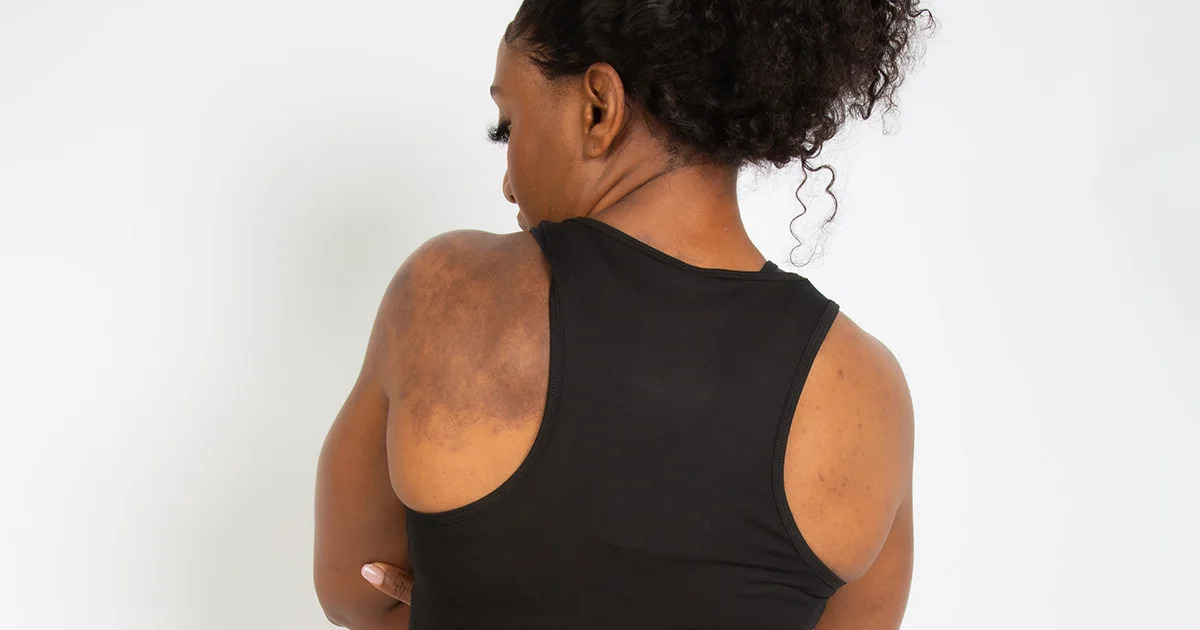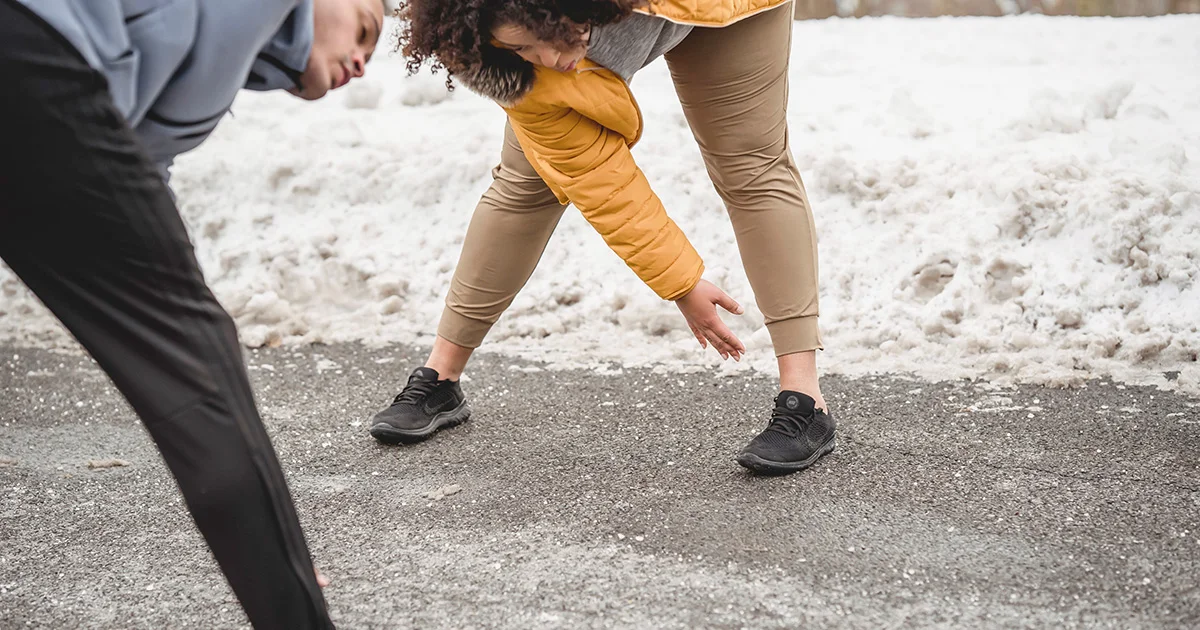Here's what we'll cover
Here's what we'll cover
Whether you have a fear of needles or not, giving yourself a shot can be stressful. If this is your first time taking an injectable medication such as Ozempic, rest assured. With a little practice, you’ll be used to it in no time.
Read on as we break down the different types of injectable medications, and walk you through how to give yourself a shot, step by step.
Intramuscular vs. subcutaneous injections
There are two main types of injections of prescription medications: intramuscular and subcutaneous.
Intramuscular injections are injected into a muscle. A typical intramuscular shot for an adult uses a needle around 1 inch long, with a gauge (or thickness) of 22–25, or around 0.7–0.5 mm. The lower the gauge, the thicker the needle.
Examples of intramuscular injections you get at the doctor’s office include certain antibiotics, vaccines, and vitamins. Testosterone injections for testosterone replacement therapy (TRT) are an example of an intramuscular injection you can give yourself at home.
Subcutaneous injections deliver the medication just under the skin, in the layer of fatty tissue between your muscle and skin. Because these medications don’t need to be injected as deeply, they typically use a much shorter and thinner needle than intramuscular injections. A typical subcutaneous shot for an adult uses a needle between 0.24–0.5 inches long, with a gauge of 25–30, or 0.5–0.3 mm.
Some subcutaneous injections use an integrated injector pen, which may have an even shorter needle of 0.16–0.5 inches.
Examples of subcutaneous injections include some weight loss medications like Ozempic or Wegovy, insulin, blood thinners, and fertility drugs.
Where to give yourself a shot
Where you give yourself a shot will depend on the type of injection for your medication.
Intramuscular injections
For intramuscular injections, you can give yourself a shot in your thigh, butt, hip, or upper arm. The thigh is a popular spot because it’s easier to give yourself a shot this way, whereas you might want someone else to give you a shot if you use the other locations.
Place the needle on the outside of your thigh, about halfway between your knee and hip, at a 90-degree angle. Position the needle to push it straight into your thigh, not at a diagonal angle. Hold the muscle around the spot using your thumb and index finger. Then, use a quick, firm thrust to give yourself the shot. It can be helpful to use the heel of your palm as a counterbalance so you can insert the needle quickly, and minimize the pain.
Subcutaneous injections
For subcutaneous injections, you can give yourself a shot in your thigh, stomach, or the side or back of your upper arm. As with intramuscular injections, you’ll probably want to ask a caregiver or family member if you want to use the upper arm as your injection spot. Giving yourself a subcutaneous injection in the stomach or thigh is easier. The stomach is a popular spot because it is easy to reach, and some people find it less painful than a thigh injection. Make sure to choose a spot at least 2 inches away from your belly button.
To give yourself a subcutaneous shot, you’ll pinch about an inch of skin and fatty tissue using your fingers from the hand not holding the needle. Then quickly insert the needle in at a 90-degree angle. If you don’t have much fatty tissue, you can insert it at a 45-degree angle.
Rotating injection sites with each shot
With both intramuscular and subcutaneous injections, rotating your injection site with each injection is important. This gives your skin and tissue time to heal by the time you use that spot again.
One easy way to change up the injection sites is to use a different body part each time — rotating through the upper arm, thigh, butt, or hip for intramuscular injections; and the thigh, stomach, or upper arm for subcutaneous injections. You can also rotate your injection spot in the same area by using different spots on your thigh or abdomen. Make sure each injection spot is at least 1 inch away from the last one you used.
If you use multiple injectable medications, use a different spot for each injection. Do not inject the medications in the exact same spot or right next to each other.
How to give yourself a shot
Your medication will include paperwork that provides specific instructions on giving yourself a shot. Read through these and ask your healthcare provider if you have any questions. In the meantime, here is a general overview of what you’ll need to do. Your healthcare provider should have detailed instructions for you if they prescribed an injection medication you give yourself at home.
Wash your hands with soap and water, then dry them.
Gather your supplies, including alcohol wipes, gauze pads or cotton balls, your medicine, needle (if separate), and sharps disposal container.
Clean the injection site with a fresh alcohol wipe or a cotton ball you’ve soaked in alcohol. Press it against the injection site and then wipe in a circular motion around it.
Wait 30 seconds for the area to dry, or dry it with a cotton ball or gauze pad.
Check your medication to confirm that it is clear, colorless, and not expired.
Prepare and inject the medication according to the type of medication below.
For single-dose injector pens: Remove the pen cap and push the pen firmly against your skin. Keep applying pressure until the indicator stops moving. You should hear a click to indicate that the injection has started and is still going.
For multi-dose injector pens: Remove the pen cap, attach a new needle, and check the pen flow according to the instructions. Then, turn the dose selector to your dose. Insert the pen into your skin and hold down the dose button until it clicks or reaches 0. Keep the needle in your skin and count slowly to 6.
For disposable needles and syringes: If you need to fill a syringe with the medication, follow the instructions in “How to fill a syringe” below. Once you are ready to give yourself a shot, hold the syringe like a pencil and insert it into your skin. Once the needle is fully inserted, slowly push the plunger to inject the medication.
Pull out the needle and throw it away in a sharps disposal container.
Apply pressure to the injection site with a clean gauze pad or cotton ball to stop any bleeding.
How to fill a syringe
For some medications, you will need to fill a syringe before injecting yourself. Carefully read through the paperwork included with your medication for specific instructions on how to do this. Here are some general guidelines of what you can expect.
Wash your hands with soap and water.
Gather your supplies, including your vial, syringe, alcohol pad, cotton ball, and sharps disposal container. Place them in a clean area.
Check the medicine vial. Read the label to confirm you’re using the right medicine and that it hasn’t expired.
Examine the medicine inside the vial. It should be clear and colorless. Do not use the medication if you notice any cloudiness or flecks floating around.
Remove the cap from the vial and clean the rubber top with your alcohol pad.
With the needle pointed up, hold the syringe in your hand like you would a pencil.
Pull back the plunger to the line on the syringe that matches your dose.
Without touching or bending the needle, insert the needle into the rubber top on the vial.
Push the plunger into the vial.
With the needle still inserted, turn the vial upside down and hold it up.
Pull back on the plunger to the line on the syringe that matches your dose.
To remove any air bubbles, keep the syringe inserted and tap it with your finger. Then push slowly on the plunger to push the air back into the vial. If you see a lot of air bubbles, push the plunger all the way in and redraw the medicine out slowly. Then tap the syringe again to push out the bubbles.
Remove the syringe from the vial and prepare to give yourself a shot.
If your medication comes in a pre-filled prescription pen, you don’t have to follow this process. But, you will need to swap out needles if your pen contains multiple doses because you’ll need a new needle for each injection. Here’s what to do:
Wash your hands with soap and water.
Check that the medicine inside the pen is clear and colorless.
Take out a new needle and remove any packaging.
Push your new needle directly onto the pen and turn it until it is on tight.
Remove the outer needle cap and put it aside. Do not throw it away, as you’ll replace it after you give yourself the injection and are ready to dispose of your needle.
Remove the inner needle cap. You can throw this one away.
Prepare to give yourself a shot.
Overcoming fears of needles
If you’re afraid of needles, know that you’re not alone. Nearly one in three adults has a fear of needles. The good news is: needle fear tends to lessen as we age (and spend more time with needles). In the meantime, there are things you can do to overcome your fear, including:
Cognitive-behavioral therapy or exposure therapy, both of which have proven effective in helping people overcome needle phobia
Vigorously coughing right before the injection (it may sound weird, but it works!)
Applying a topical anesthetic, or ice pack to the injection site beforehand (don’t forget to disinfect the injection site right after) to relieve pain
Using breathing exercises during the injection to calm yourself
Sitting upright during the injection helps your body feel more in control
DISCLAIMER
If you have any medical questions or concerns, please talk to your healthcare provider. The articles on Health Guide are underpinned by peer-reviewed research and information drawn from medical societies and governmental agencies. However, they are not a substitute for professional medical advice, diagnosis, or treatment.
Alsbrooks, K. & Hoerauf, K. (2022). Prevalence, causes, impacts, and management of needle phobia: An international survey of a general adult population. PloS One, 17(11), e0276814. doi:10.1371/journal.pone.0276814. Retrieved from https://www.ncbi.nlm.nih.gov/pmc/articles/PMC9678288/
Centers for Disease Control and Prevention (CDC). (2023). Vaccine Administration. Retrieved Jul. 5, 2023 from https://www.cdc.gov/vaccines/hcp/acip-recs/general-recs/administration.html#ref21
McLenon, J. & Rogers, M. A. M. (2019). The fear of needles: A systematic review and meta-analysis. Journal of Advanced Nursing, 75(1), 30–42. doi:10.1111/jan.13818. Retrieved from https://deepblue.lib.umich.edu/bitstream/handle/2027.42/147205/jan13818.pdf
McMurtry, C. M., Noel, M., Taddio, A., et al. (2015). Interventions for Individuals With High Levels of Needle Fear: Systematic Review of Randomized Controlled Trials and Quasi-Randomized Controlled Trials. The Clinical Journal of Pain, 31(10 Suppl), S109–S123. doi:10.1097/AJP.0000000000000273. Retrieved from https://www.ncbi.nlm.nih.gov/pmc/articles/PMC4900415/
MedlinePlus. (2021). Subcutaneous (SQ) injections. Retrieved Jul. 5, 2023 from https://medlineplus.gov/ency/patientinstructions/000430.htm
MedlinePlus-a. (2022). Giving an IM (intramuscular) injection. Retrieved Jul. 5, 2023 from https://medlineplus.gov/ency/patientinstructions/000935.htm
MedlinePlus-b. (2022). Drawing medicine out of a vial. Retrieved Jul. 5, 2023 from https://medlineplus.gov/ency/patientinstructions/000530.htm
Polania Gutierrez, J. J. & Munakomi, S. (2023). Intramuscular Injection. StatPearls. Retrieved Jul. 5, 2023 from https://www.ncbi.nlm.nih.gov/books/NBK556121/
Rasooli, F., Sotoodehnia, M., Nejati, A., et al. (2020). The assessment of ice pack effect in pain reduction during digital nerve block: A randomized clinical study. Turkish Journal of Emergency Medicine, 20(2), 81–85. doi:10.4103/2452-2473.281628. Retrieved from https://www.ncbi.nlm.nih.gov/pmc/articles/PMC7305669/
Taddio, A., McMurtry, C. M., Shah, V., et al. (2015). Reducing pain during vaccine injections: clinical practice guideline. CMAJ : Canadian Medical Association Journal = Journal de l'Association Medicale Canadienne, 187(13), 975–982. doi:10.1503/cmaj.150391. Retrieved from https://www.ncbi.nlm.nih.gov/pmc/articles/PMC4577344/
U.S. Food and Drug Administration (FDA-a). (2022). Ozempic (semaglutide) injection, for subcutaneous use. Retrieved from https://www.accessdata.fda.gov/drugsatfda_docs/label/2022/209637Orig1s009lbl.pdf
U.S. Food and Drug Administration (FDA-b). (2022). Wegovy (semaglutide) injection, for subcutaneous use. Retrieved from https://www.accessdata.fda.gov/drugsatfda_docs/label/2022/215256s005lbl.pdf
Usach, I., Martinez, R., Festini, T., et al. (2019). Subcutaneous Injection of Drugs: Literature Review of Factors Influencing Pain Sensation at the Injection Site. Advances in Therapy, 36(11), 2986–2996. doi:10.1007/s12325-019-01101-6. Retrieved from https://www.ncbi.nlm.nih.gov/pmc/articles/PMC6822791/











